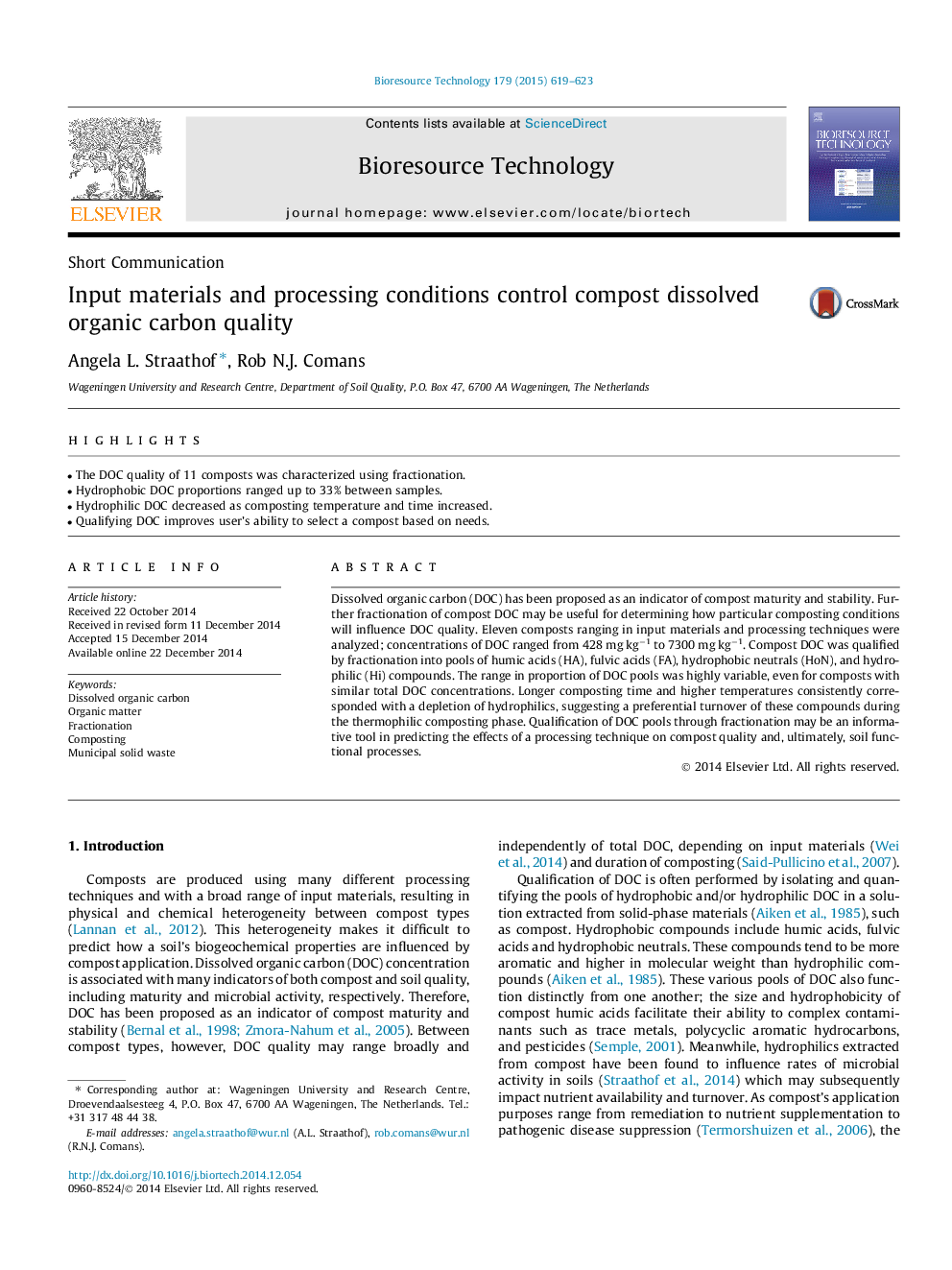| Article ID | Journal | Published Year | Pages | File Type |
|---|---|---|---|---|
| 680197 | Bioresource Technology | 2015 | 5 Pages |
•The DOC quality of 11 composts was characterized using fractionation.•Hydrophobic DOC proportions ranged up to 33% between samples.•Hydrophilic DOC decreased as composting temperature and time increased.•Qualifying DOC improves user’s ability to select a compost based on needs.
Dissolved organic carbon (DOC) has been proposed as an indicator of compost maturity and stability. Further fractionation of compost DOC may be useful for determining how particular composting conditions will influence DOC quality. Eleven composts ranging in input materials and processing techniques were analyzed; concentrations of DOC ranged from 428 mg kg−1 to 7300 mg kg−1. Compost DOC was qualified by fractionation into pools of humic acids (HA), fulvic acids (FA), hydrophobic neutrals (HoN), and hydrophilic (Hi) compounds. The range in proportion of DOC pools was highly variable, even for composts with similar total DOC concentrations. Longer composting time and higher temperatures consistently corresponded with a depletion of hydrophilics, suggesting a preferential turnover of these compounds during the thermophilic composting phase. Qualification of DOC pools through fractionation may be an informative tool in predicting the effects of a processing technique on compost quality and, ultimately, soil functional processes.
